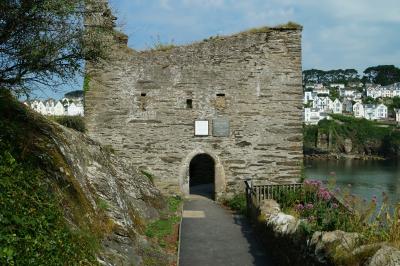
One of a pair of towers built to defend the Estuary
The Castle which sits on the Eastern bank of the Fowey estuary was one of a pair of defensive structures. Built in 1380, they were to defend against French, Spanish and Dutch attacks. The second is on the Fowey side but is ruined beyond and only the footings remain. The structures which were square had 6 foot thick walls and were 3 storeys tall. The Blockhouse was also equipped for use with guns, there being 2 gun-ports. The two blockhouses were linked by a metal chain, 16 inches thick, which could be raised during an attack, preventing vessels from entering the harbour and leaving them vulnerable, from both sides.
Unfortunately they proved insufficient to stop a French attack in 1457 which led to the upgrading of the defences with a boom barrier - the thick chain that blocked access to enemy ships but which was dropped to the seabed for allied vessels.
The chain was removed in 1478 by Edward IV and sent to Dartmouth apparently because of the outrageous behaviour of local pirates, Treffry and Michelstow.
Royalists held the Blockhouse during the Civil War in 1644 and prevented the Roundheads (Parliamentarians) leaving by ship.
The blockhouses were superseded by St. Catherine's Castle on the Fowey side, built by Henry VIII in 1540.
The last time it was used was when the Dutch fleet threatened Fowey harbour 1667.
Opening TimesEvery Day Admission Free |
Fowey Polruan St. Catherine's Castle